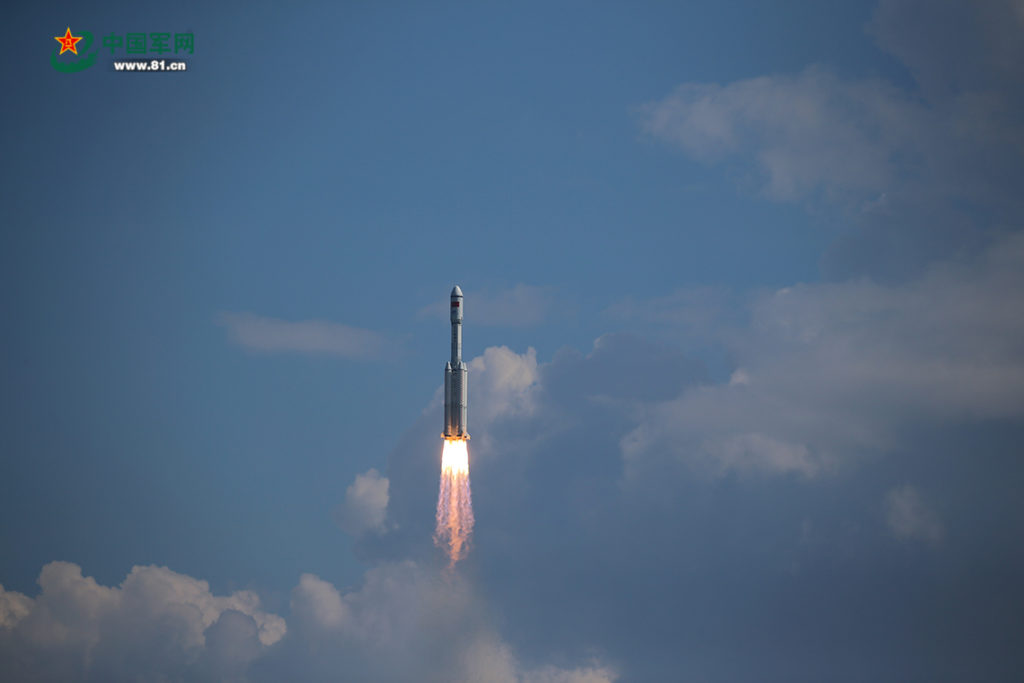美国出口管制使C919客机认证和生产受阻
9/27/2021
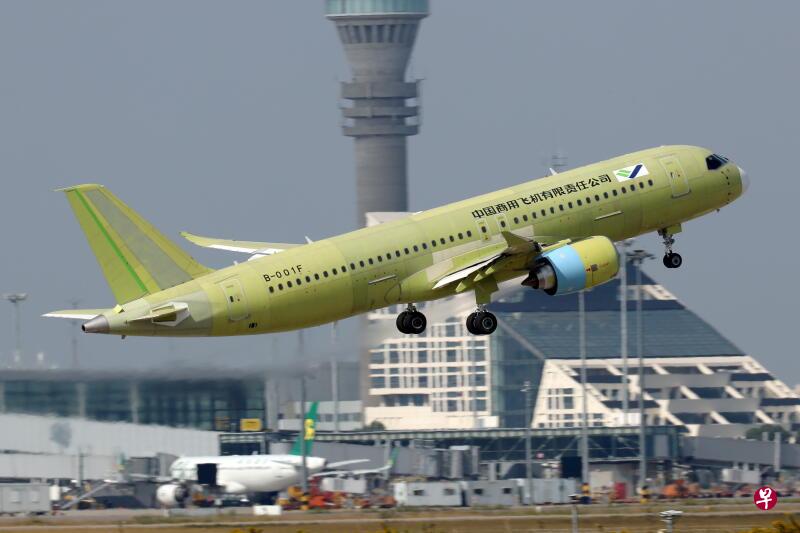
本周的中国珠海航展上,中国C919客机并未参展。三位知情消息人士透露,由于美国严格的出口管制,导致这款飞机更难达成认证和生产目标。
据路透社报道,上述消息人士称,中国商用飞机公司无法得到供应商的及时帮助,一些备用零件甚至已经告罄。
自2020年12月起,美国要求向任何与中国军方有关联的企业出口零部件和提供技术援助都需获得特别许可,给C919计划套上了紧箍咒。
消息人士称,美国相关供应商逐渐获得许可,但这已导致中国认证速度变慢,长达数月的延迟有可能影响到早期生产。由于此事的敏感性,消息人士要求匿名。
中国商飞获得815架临时订单,但只有中国东方航空下了五架飞机的确定订单。
东方航空8月表示,预计首架飞机将在年底前交付,之后在2022年交付两架,2023年再交付两架。
“最大的障碍之一将是供应链,特别是在当前通胀、材料供应和供应商变化的背景下,”美国航空航天咨询公司Patriot Industrial Partners的航空航天供应链专家Alex Krutz说。
“供应商可能没有流动资金来进行适航认证后的改装,也不像几年前那样愿意继续支持像中国商飞这样的初始进展较慢的生产计划,”他补充说。
中国商飞落后于其最初的认证计划多年–这也是它没有带C919参加中国航展的原因之一。
“中国商飞非常专注于试飞。他们落后于计划,正在尽可能多地飞行以达到中国认证所需的最低小时数,”一位业内人士告诉路透。“尽管有这么多问题,中国商飞还是非常坚定地要获得认证,因为这是一项重大的政治任务。”
消息人士称,C919有可能在今年年底前获得中国航空监管机构颁发的型号合格证,但会有一长串关于飞行操作的限制。消息人士说,即使在获得认证之后,中国商飞也必须进行升级。
中国商飞和中国民用航空局(CAAC)没有回应置评请求。
C919 reportedly faces delays over tightened US export rules
By Alfred Chua
9/27/2021
The Comac C919 narrowbody programme appears to have hit a roadblock, months before its targeted service entry.
A 27 September report from Reuters, citing unnamed sources, says the programme — touted to be a homegrown competitor to Airbus’ A320 family and Boeing’s 737 programme — faces the likelihood of missing “certification and production targets”, amid stricter US export rules.
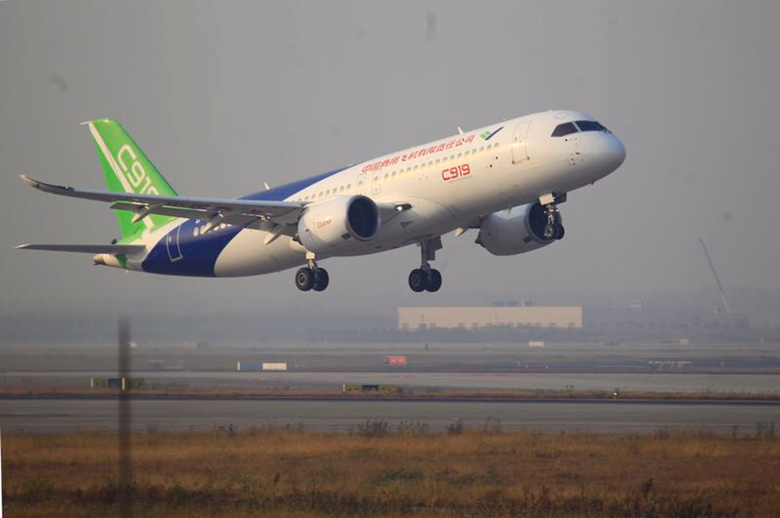
Comac is hoping to deliver its first C919 in 2021.
Though a Chinese aircraft programme, the C919 is largely reliant on Western technologies — the aircraft is powered by two CFM International Leap-1C turbofans, for example.
Since December 2020, the US tightened export regulations to China, with companies deemed as having links to the Chinese military subject to special export licensing requirements.
According to the Reuters report, Western suppliers to the C919 programme are “gradually receiving” their special licences to export to China, but the slower-than-expected pace has thrown the C919 certification and production timeline into disarray.
The sources told Reuters that early production would be most affected by the latest hiccup, adding to the woes of the much-delayed programme.
Reuters’ sources also state that Comac is “preoccupied” with clocking the mandatory test flight hours needed for Chinese certification, which it hopes to clinch by year-end.
As recently as early September, Comac says that the first C919 — to be delivered to launch customer China Eastern Airlines — will be entering final production “soon”, and that it hopes to deliver the example by year-end.
China Eastern has firm orders for five C919s. The Shanghai-based carrier a letter of intent for 20 C919s in 2010.
News of delays facing the C919 programme also come a day before the opening of the 2021 edition of Airshow China in Zhuhai.
The C919, which has never before appeared at China’s premiere airshow, will be absent again this year.
天舟三号与空间站完成自主快速交会对接
9/20/2021
中国载人航天工程办公室宣布,天舟三号货运飞船入轨后顺利完成入轨状态设置,于20日22时08分,采用自主快速交会对接模式成功对接于空间站天和核心舱后向端口。整个过程历时约6.5小时。
据中新社报道,天舟三号装载了航天员生活物资、舱外航天服及出舱消耗品、空间站平台物资、部分载荷和推进剂等,与天和核心舱及天舟二号组合体完成交会对接后,转入三舱(船)组合体飞行状态。
搭载天舟三号货运飞船的长征七号遥四运载火箭昨天15时10分在文昌航天发射场点火发射。约597秒后,飞船与火箭成功分离,进入预定轨道。15时22分,飞船太阳能帆板顺利展开且工作正常。
中国成功发射天舟三号货运飞船
9/20/2021
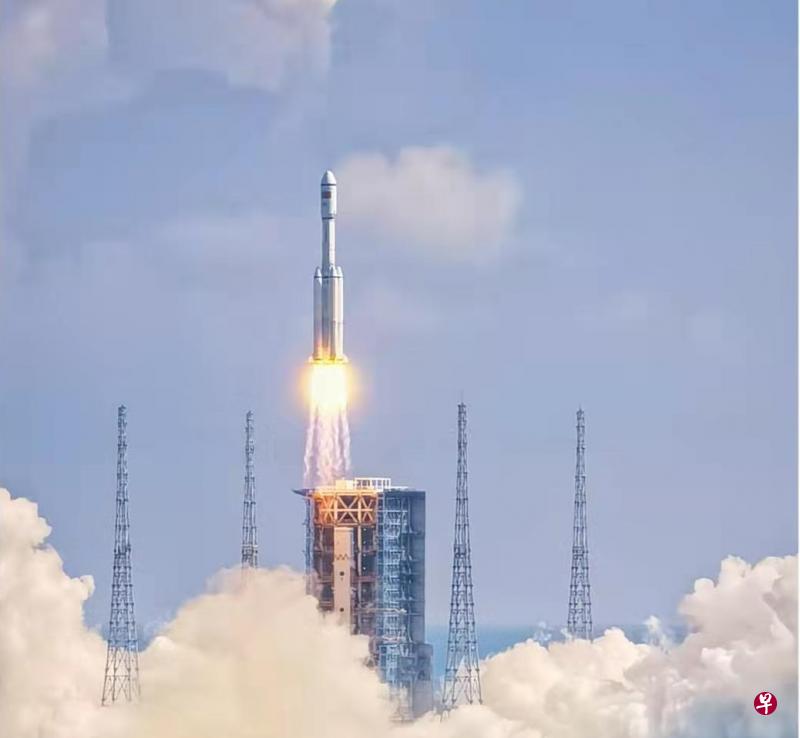
中国今天(20日)下午3时10分成功发射天舟三号货运飞船。
据中国央视新闻报道,中国载人航天工程办公室公布,搭载天舟三号货运飞船的长征七号遥四运载火箭,在中国文昌航天发射场点火发射。飞船之后与火箭成功分离,进入预定轨道,飞船太阳能帆板过后也顺利展开且工作正常,发射取得圆满成功。
天舟三号货运飞船下来将与在轨运行的中国空间站组合体进行交会对接。
Sep 20, 2021
Express delivered from Earth to space! China successfully launched Tianzhou-3 to its space station. The 6-ton supplies will support Shenzhou-13 manned mission in October, which is expected to last for six months.
这艘货运飞船将为下月神舟十三号载人飞船进入天和核心舱做准备。有消息说,航天员王亚平可能入选神舟十三号飞船乘组,成为进入中国空间站的首名女航天员。
天舟三号货运飞船的主要任务是运输货物和补加推进剂,为神舟十三号载人飞船乘组在空间站的生活和工作提供物资保障。
China successfully launches Tianzhou-3 for second space station supply mission; to support upcoming six-month Shenzhou-13 manned mission
9/20/2021
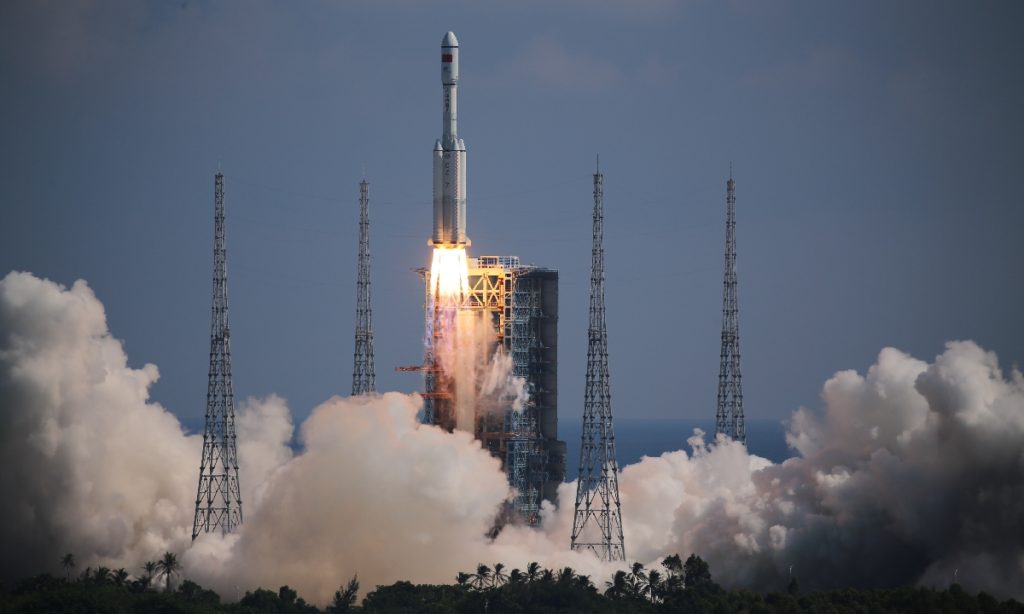
Knock knock. This is your delivery-man Tianzhou-3, and please confirm your package receipt and may you have a happy Mid-Autumn Festival!
Carrying the Tianzhou-3 cargo spacecraft, the Long March-7 Y4 rocket lifted off from Wenchang Space Launch Center located in South China’s Hainan Province on Monday afternoon, one day ahead of this year’s Mid-Autumn Festival – one of the happiest family reunion holidays for the Chinese people.
The lift-off gave the nearby forest of palm trees quite a shake in the Hainan tropical haze, the same way it excited many who came to witness the historic moment at the Wenchang beach on Monday afternoon.
As the fourth of 11 missions scheduled to build China’s three-module space station, Tianzhou-3 mission came shortly after the historic Shenzhou-12 mission in which three taikonauts spent a record 90 days in the China’s space station core module and safely returned to Earth on Friday.
After a flight time of around 597 seconds, the spacecraft separated with the rocket and entered preset orbit. At 3:22 pm, the solar panels onboard the spacecraft smoothly unfolded, with all functions in normal operating condition, marking the success of the third launch of a spaceship to the space station core cabin, according to the China Manned Space Agency (CMSA.)
The Monday mission is tasked to bring supplies, equipment and propellant to get Tianhe ready for the next three-taikonaut Shenzhou-13 mission in October for their six-month stay. It is the Tianzhou spacecraft series second supply delivery run to the orbiting Tianhe module following a first by the Tianzhou-2 mission launched on May 29.
Sep 20, 2021
据中国载人航天工程办公室消息,北京时间2021年9月20日15时10分,搭载天舟三号货运飞船的长征七号遥四运载火箭,在中国文昌航天发射场点火发射,约597秒后,飞船与火箭成功分离,进入预定轨道,15时22分,飞船太阳能帆板顺利展开且工作正常,发射取得圆满成功。
后续,天舟三号货运飞船将与在轨运行的空间站组合体进行交会对接。这是中国载人航天工程的第20次发射任务,也是长征系列运载火箭的第 389次飞行。
Although the launch of Tianzhou-2 by Long March-7 Y3 rocket was a successful one, it experienced two delays and met problems of leaking of injected fuels.
The Tianzhou-2 cargo spacecraft was originally slated to be launched at around 1:30 am on May 20 and to head to China’s Tianhe space station core cabin, which was launched into orbit on April 29, for a supply run. However, the launch was scrubbed narrowly following an announcement from CMSA on the early morning of May 20 for “technical reasons.”
Research teams were dispatched immediately to check system functions, while the command center prepared for an attempt to recover the mission, which had been set to a day later in the early morning of May 21. However, after liquid oxygen was refueled eight hours before the scheduled launch time, abnormal signals once again occurred.
Drawing lessons from the previous launch, the Long March-7 rocket developer with the China Academy of Launch Vehicles have further optimized the quality examination process before and after the lift-off and make detailed emergency plans. This is to ensure the launch mission is on time with zero errors, the academy told the Global Times on Friday.
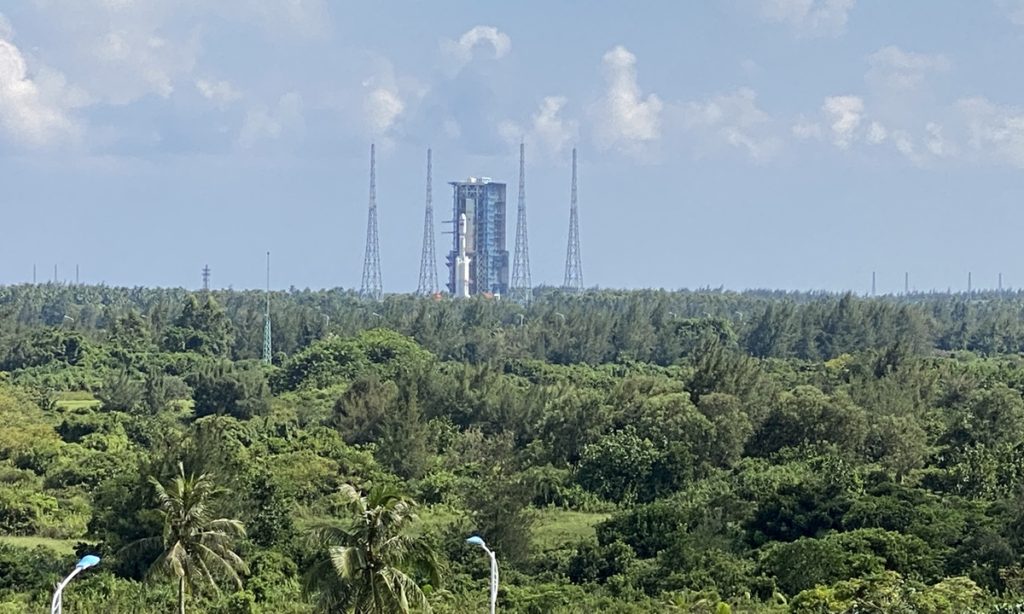
To sustain Taikonauts’ longer stay in space
Global Times learned from the mission insiders that Tianzhou-3 mission will lay ground for the upcoming October Shenzhou-13 mission, just the way Tianzhou-2 mission prepared for the epic Shenzohu-12 manned spaceflight mission. The October mission is expected to last six months, renewing the record of the longest stay in space for a Chinese astronaut in a single mission.
The spacecraft developer China Academy of Space Technology (CAST) told the Global Times in a statement that just like the Tianzhou-2, Tianzhou-3 will carry a range of goods including daily necessities, drinking water, gas supplies, consumables for extravehicular activities [spacewalk,] as well as experiment payloads.
Yang Sheng, Chief designer of the Tianzhou-3 spacecraft system, told the Global Times that “As Tianzhou-3 mission will sustain taikonauts’ 6-month-long stay in space, the density of cargo is greater on Tianzhou-3 than on Tianzhou-2, and Tianzhou-3’s loading capability is also higher than that of Tianzhou-2. The number of packages onboard Tianzhou-3 is 25 percent more than on Tianzhou-2.”
There were 6.8 tons of supplies onboard the Tianzhou-2, including some 160 parcels of goods and two tons of propellants, CAST told the Global Times previously.
One of the most expensive items to be onboard the Tianzhou-3 would be one piece of spacesuit specially designed for spacewalk missions that weighs some 90 kilograms, the CAST highlighted in the Friday statement. Tianzhou-2 had sent two pieces of spacesuits for Taikonauts’ spacewalk with each weighing some 100 kilograms.
Also, onboard Tianzhou-3 is the replacement parts of the urine treatment system to ensure the device is in the best condition for the Shenzhou-13 crew, Global Times learned from the system developer 206 Research Institute of the Second Academy of the China Aerospace Science and Industry Corp (CASIC).
“The system has processed some 600 liters of urine into over 500 liters of water which was used to generate oxygen and for clean-up purpose during the Shenzhou-12 crew’s three-month stay. Shenzhou-13 crew will install those parts when moving into the China’s space station core module,” Cui Guangzhi, the project leader, told the Global Times.
The Tianzhou-3 cargo spacecraft is expected to also execute a fast and automatic rendezvous and docking with the Tianhe core module, just like the Tianzhou-2 spacecraft did in May, which took some eight hours after lift-off,according to Deng Kaiwen, assistant of the Tianzhou-3 cargo spacecraft’s chief commander from the spacecraft developer
Compared to the Tianzhou-1’s rendezvous and docking with Tiangong-2 in 2017, which took about two days, Tianzhou-2 took a mere eight hours to achieve the feat in May.
Tianzhou-3 will dock to the Tianhe module from the rear. Before such development, CMSA updated on Saturday, Tianzhou-2 had flown around Tianhe and conducted an automatic docking to the craft’s front, which took four hours.
Shenzhou-13 will later rendezvous with the Tianhe module and conduct a R-Bar or vertical docking with the orbiting craft, which Shenzhou-12 had practiced on Friday before heading back to Earth.

天舟三号货运飞船已与火箭成功分离并进入预定轨道
路透新闻部
9/20/2021
路透北京9月20日 – 中国载人航天工程办公室周一称,北京时间15时10分,搭载天舟三号货运飞船的长征七号遥四运载火箭,在文昌航天发射场点火发射,约597秒后,飞船与火箭成功分离,进入预定轨道。
该办公室官网刊登的新闻稿(here)并称,15时22分,飞船太阳能帆板顺利展开且工作正常;后续,天舟三号货运飞船将与在轨运行的空间站组合体进行交会对接。
新闻稿并指出,这是中国载人航天工程的第20次发射任务,也是长征系列运载火箭的第389次飞行。
科技日报报导称,按计划安排,天舟三号将与空间站核心舱和天舟二号组合体实现自主快速交会对接。
报导并指出,天舟三号任务是空间站关键技术验证及建造阶段的第二次货物运输应用性飞行。(完)
天舟三号满载出发,它都带了啥?
科技日报记者 付毅飞
9/20/2021
9月20日,由中国航天科技集团五院抓总研制的天舟三号货运飞船在海南文昌发射场成功发射。按计划安排,它将与空间站核心舱和天舟二号组合体实现自主快速交会对接。
记者从五院了解到,天舟三号任务是空间站关键技术验证及建造阶段的第二次货物运输应用性飞行。飞船为满载状态,运载了可支持3名航天员6个月在轨驻留的物资,以及空间站备份设备、空间科学载荷等,还携带了补加推进剂等上行物资。该飞船还具备并网供电能力,在停靠期间可以为空间站提供供电支持。
“天舟三号携带的货物主要包括航天员生活物资、航天饮水、气体补给、卫生用品、应急储备物资、出舱消耗品、维修备件和实验载荷等,与天舟二号基本一致。”五院天舟三号总指挥冯永介绍说。
航天员在空间站内生存需要适宜的大气环境,所以天舟三号运送的一样重要的货物,就是气瓶。这种气瓶用特种复合材料制成,可以充至300倍大气压力,1瓶氧气就能供航天员很长时间使用。
除了空气,太空生活也离不开宝贵的水资源。五院货运飞船系统总体主管设计师王冉介绍,天舟三号这次带了多组水箱,供航天员饮用和使用。这些水箱均采用了轻质、柔软材料制成的“水囊”包装,不仅可以保证饮水安全,还可以在饮水用尽后更好地收纳。
此次货物中最贵重的,要属舱外航天服了。该装备重达90多公斤,价格达到千万元量级,堪称世界上最贵的“衣服”。货运飞船系统为此专门设计了舱外服支架,保证其在运输过程中不会损坏。
除了上述特殊物品,天舟三号携带的大多数货物都是用标准化、型谱化货包装载的。这些货包不仅具有良好的力学承载性能,还有抗菌、防霉、阻碍燃烧、无有害气体挥发等多个优点。鲜为人知的是,这些货包材料的灵感竟源于螃蟹壳。王冉介绍,研制人员从螃蟹壳里提取了一种特有成分,经过特殊工艺,特殊制作,研发出性能优异的货包材料。
在货物装载方面,天舟三号充分继承了天舟二号的经验,并进行了优化和改进。五院天舟三号货运飞船系统总体主任设计师杨胜表示,相比天舟二号,天舟三号货物装载的密度更大,货物在发射场安装的效率更高。由于天舟三号所运物资要满足航天员6个月的使用需求,对整船装载能力提出了更高要求,装载的货包数量相比天舟二号增加了25%。
天舟三号货运飞船发射任务取得圆满成功
来源:中国军网
9/20/2021
天舟三号货运飞船发射任务取得圆满成功
我国载人航天工程发射任务取得20战20捷
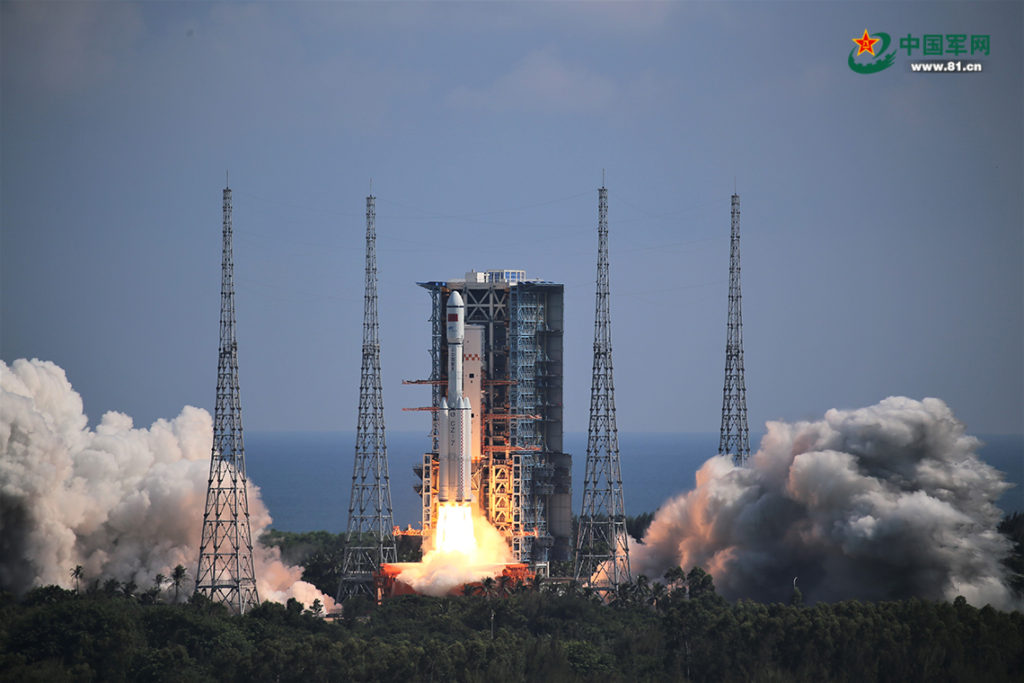
中国军网文昌9月20日电(记者董兆辉) 据中国载人航天工程办公室消息,北京时间2021年9月20日15时10分,搭载天舟三号货运飞船的长征七号遥四运载火箭,在我国文昌航天发射场点火发射。约597秒后,飞船与火箭成功分离,进入预定轨道,15时22分,飞船太阳能帆板顺利展开且工作正常,发射取得圆满成功。后续,天舟三号货运飞船将与在轨运行的空间站组合体进行交会对接。这是我国载人航天工程的第20次发射任务,也是长征系列运载火箭的第389次飞行。
(摄影:胡煦劼)

